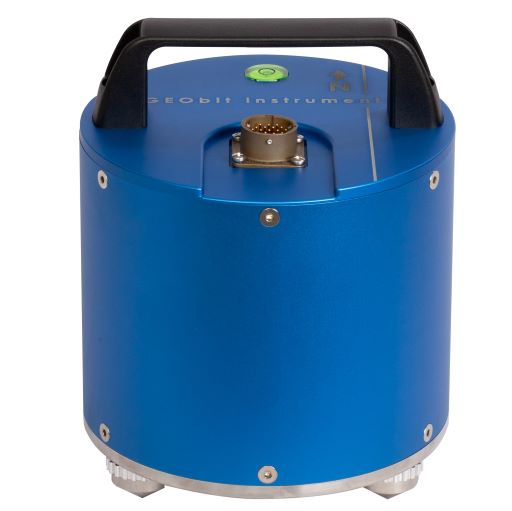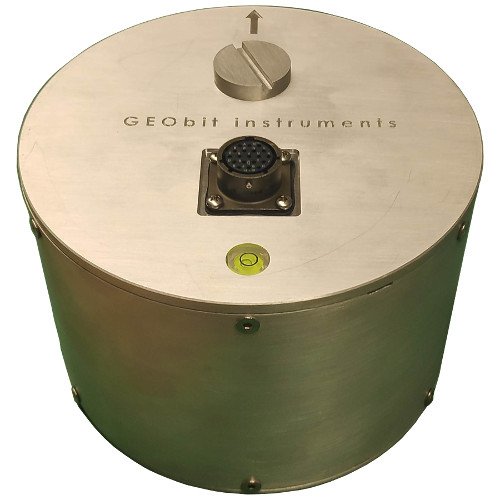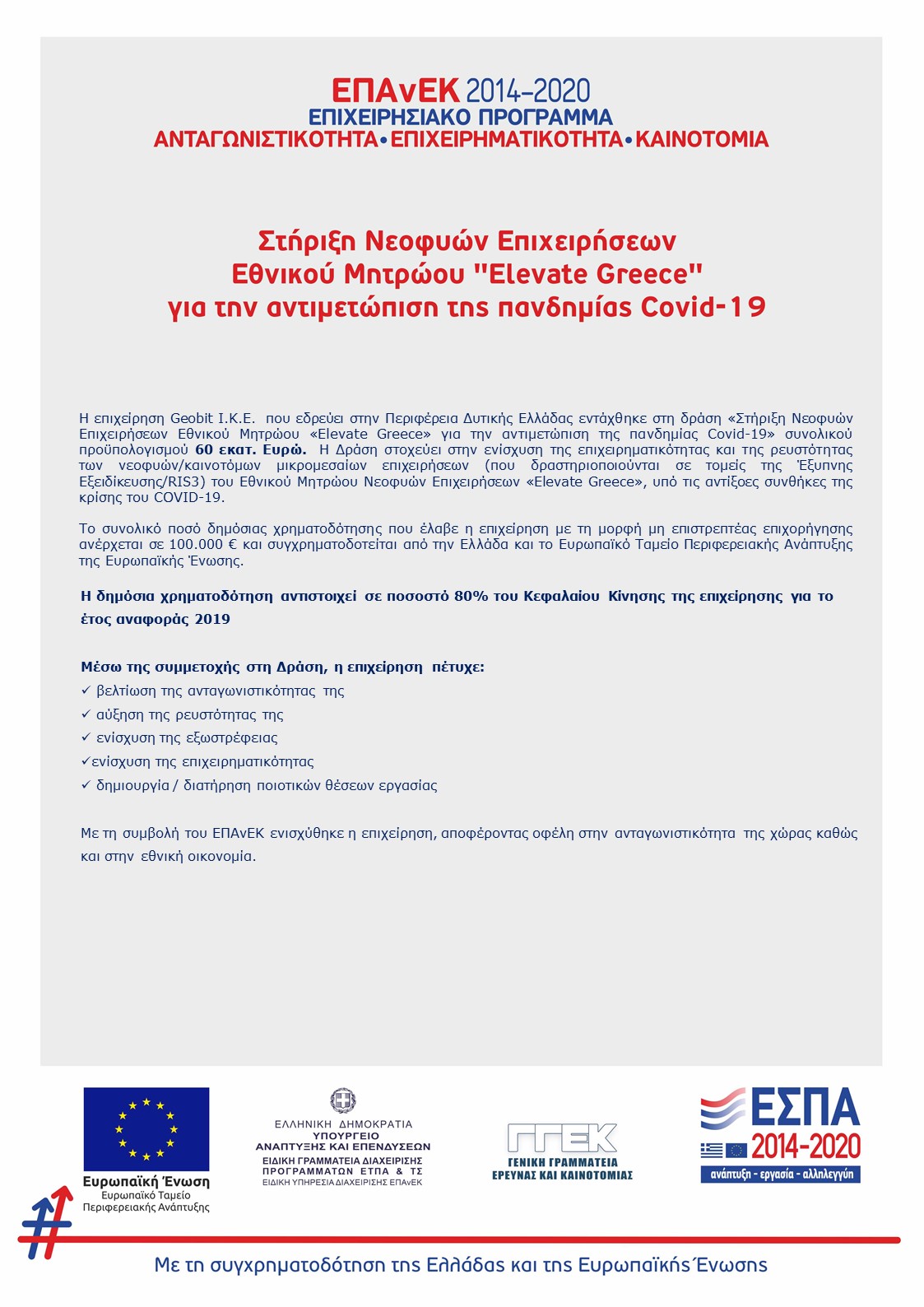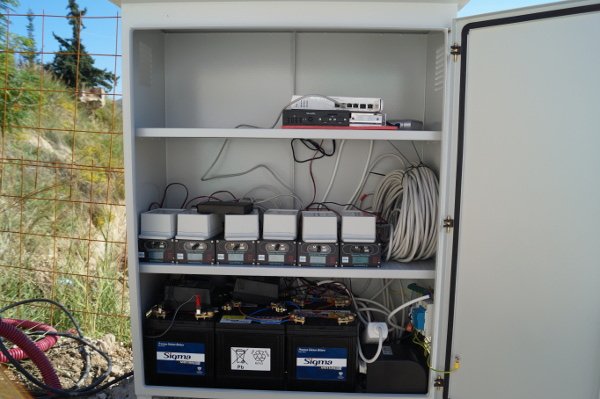
Multi-Channel Systems
Multi-Channel Systems for Structural Monitoring applications
- Multi-channel systems (up to 1000 recording channels) with parallel data recording at the central recording unit
- Parallel data processing
- Usage of 32bit ADC digitizer units
- Extremely low power consumption, only 0.2W per channel
- Real time telemetry over seedlink protocol & system control
- Variety selection of analog sensors (BB seismometer, Short Period Seismometer, Geophone Force-Balance, High Frequency Geophone, Deep Borehole Geophone Sensor, Water Pressure, Hydrophone, Seismic Accelerometer, Strong Motion Accelerometer, MEMS Accelerometer)
- Real time data processing module according to the DIN4150 format
- Real time user alert
GEObit provides a flexible, real time, immediate warning structural monitoring solution. We combine our GEOThree digitizers/recorders and a very powerful processing unit for providing real time structural motoring & alert system.
The Geobit advanced multi-channel structural monitoring system supports real time automatic user alert. The system acquires data from all the channels at 200sps per channel by default, continuously and processes them in real time. The vibration level is calculated in DIN4150 format and if the level exceeds the standard limit, the user receives alert sms and e-mail.
The multi channel system has been used as well in several applications requiring real time vibrations monitoring, like blast monitoring, structure vibrations monitoring caused from nearby works or constructions, or ancient buildings monitoring by any type of human source vibrations.


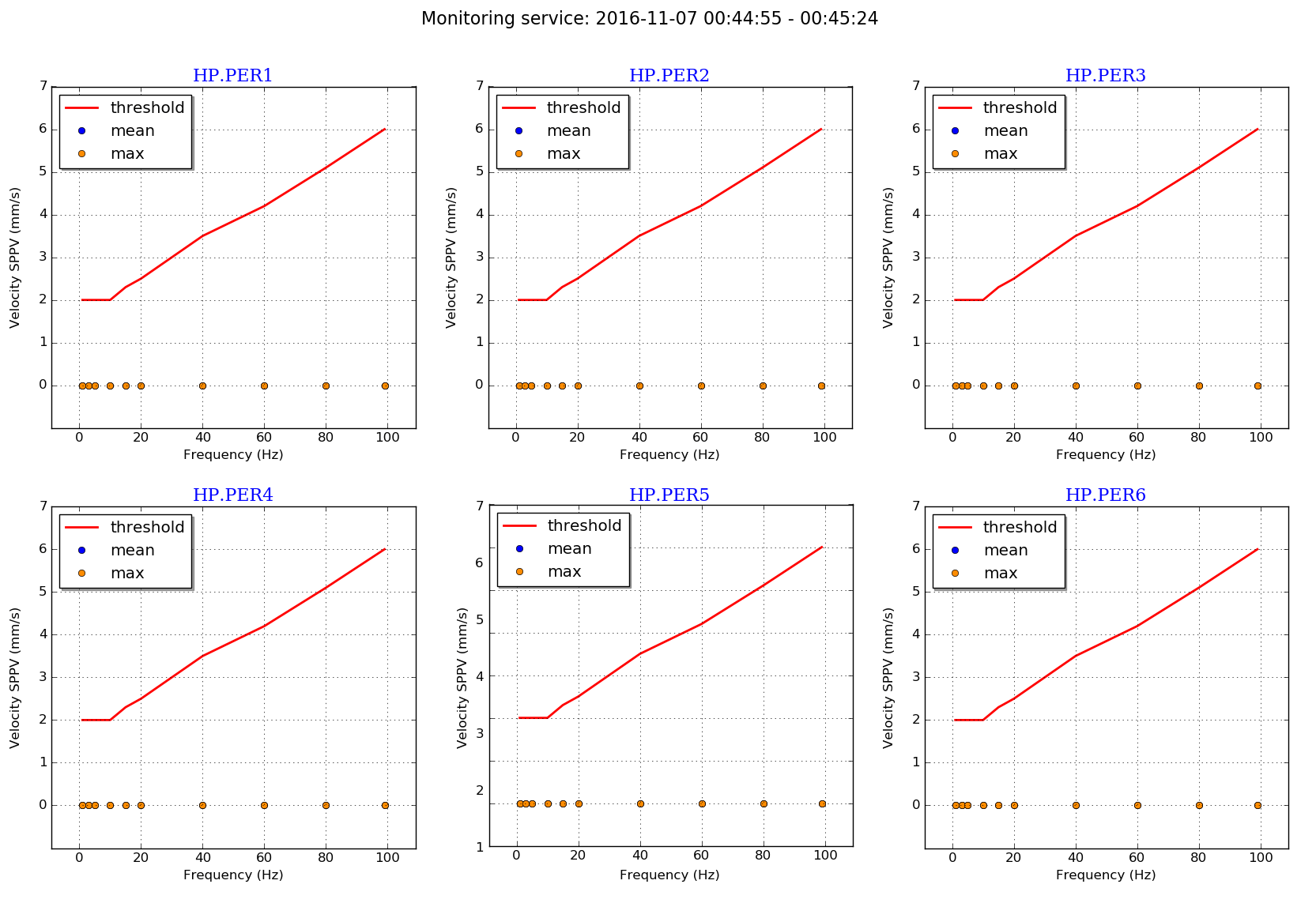

The GEOShock software
The communication and analysis software (GEOShock) is running on a linux pc, with the following features: Signal waveform plot, FFT analysis, spectrum response, energy content per frequency, file conversion in ASCII format, individual trigger level set of each sensor, alert via e-mail or sms when SPPV exceeds predefined limits etc. The software can be installed into any computer and thus the user can receive data in real time and have them processed in multiple receiving points. The software includes the data plot software “SeisGram2k” and the SPPV monitor.
The implementation of the software has been developed in a such way that it provides continuous monitoring and recording of the vibrations in real time and in parallel vibration calculation at every minute and how many times the SPPV limit has been exceeded (if so). The SPPV limit is not constant but linear to the frequency from 10 to 100Hz and can be derived from the structural study of the building.
The software has the ability to send automated email notifications to the user in case of exceeding the limits.
The SPPV velocity calculation is automatically performed from the monitor service program GEOshock that processes the data in real time, calculates the SPPV magnitude and displays it in a plot as function of frequency. It also plots the maximum SPPV value that is calculated every minute. If the SPPV threshold is exceeded, the user receives an alert e-mail containing the maximum value that exceed the threshold.





